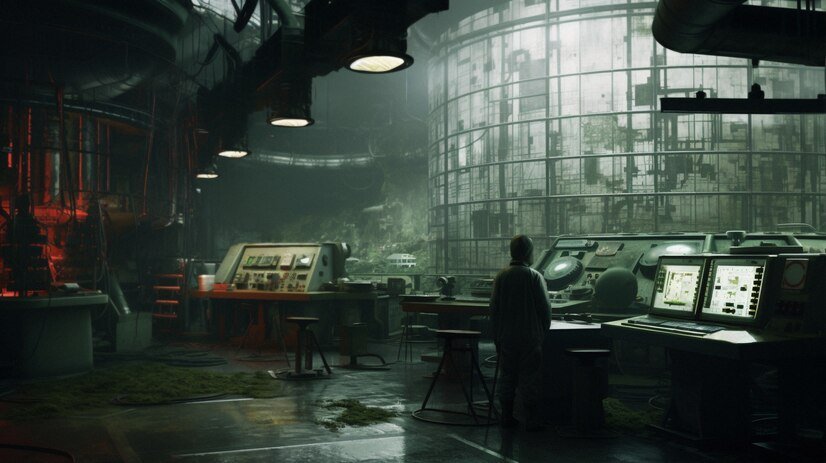Music & Movies
Serial Killer Isekai ni Oritatsu Chapter 7: A Dark Revelation
Dive into the thrilling twists and dark revelations of “Serial Killer Isekai ni Oritatsu Chapter 7.” Discover the plot, characters, and key moments that define this gripping chapter.

Introduction
“Serial Killer Isekai ni Oritatsu,” a compelling dark fantasy series, continues to captivate readers with its intricate plot and complex characters. Chapter 7 stands out as a pivotal point in the story, offering profound revelations and intense developments that leave readers on the edge of their seats. In this chapter, we witness the protagonist’s struggle with their dark past, new alliances, and unforeseen challenges in the otherworldly realm they now inhabit.
Serial Killer Isekai ni Oritatsu Chapter 7
The Beginning of the Chapter
In the opening scenes of Chapter 7, the atmosphere is thick with tension. The protagonist, still grappling with their new reality, encounters an unexpected figure from their past. This reunion is far from a happy one, as old wounds are reopened, and hidden truths come to light. The chapter delves deep into the psychological turmoil of the protagonist, providing readers with a more profound understanding of their character.
A Glimpse into the Protagonist’s Past
The narrative takes us back to pivotal moments in the protagonist’s life, shedding light on their transformation into a serial killer. Through a series of flashbacks, we see the events and decisions that shaped their dark path. These insights are crucial, as they not only explain the protagonist’s actions but also evoke a sense of empathy and complexity, making them a multifaceted character rather than a one-dimensional villain.
New Alliances and Enemies
As the protagonist navigates the treacherous landscape of the isekai world, they encounter new allies who offer assistance, albeit with their own hidden agendas. The alliances formed in this chapter are tenuous and fraught with mistrust. Readers are left questioning who can truly be trusted in this perilous journey. Additionally, new enemies emerge, each more formidable than the last, raising the stakes and intensifying the plot.
The Central Conflict
Chapter 7 introduces a significant conflict that serves as a catalyst for the protagonist’s development. This conflict is not only physical but also moral, forcing the protagonist to confront their inner demons and question their motivations. The stakes are high, and the choices made in this chapter will have lasting consequences for the story’s progression.
Climactic Confrontation
The chapter builds up to a climactic confrontation that is both thrilling and emotionally charged. The protagonist is pushed to their limits, both physically and mentally, as they face off against a powerful adversary. This battle is a turning point, revealing hidden strengths and vulnerabilities in the protagonist.
Key Revelations
Several key revelations are unveiled in Chapter 7, each adding depth and complexity to the plot. These revelations challenge the protagonist’s understanding of their new world and their place within it. They also set the stage for future developments, hinting at even greater challenges ahead.
Character Development
The character development in Chapter 7 is particularly noteworthy. The protagonist’s interactions with other characters, as well as their internal struggles, contribute to a richer, more nuanced portrayal. Readers gain a deeper insight into their motivations, fears, and aspirations, making them more relatable and compelling.
Themes and Symbolism
This chapter continues to explore themes of redemption, identity, and the nature of evil. The use of symbolism is prevalent, with certain objects and events representing larger concepts that resonate throughout the story. These thematic elements add layers of meaning, encouraging readers to think critically about the narrative.
Setting and World-Building
The isekai world in “Serial Killer Isekai ni Oritatsu” is vividly described, with Chapter 7 expanding on its unique landscapes and cultures. The detailed world-building enhances the immersive experience, allowing readers to fully engage with the story. The settings are not just backdrops but integral parts of the plot, influencing the characters’ actions and the story’s direction.
Narrative Style
The narrative style in Chapter 7 is gripping and intense, with a pace that keeps readers hooked from start to finish. The author’s use of descriptive language and vivid imagery brings the scenes to life, making the events feel immediate and impactful. The balance between action and introspection is masterfully handled, providing a well-rounded reading experience.
Anticipation for Future Chapters
Chapter 7 leaves readers with a sense of anticipation and excitement for future installments. The cliffhanger ending, combined with the numerous unanswered questions, ensures that readers will eagerly await the next chapter. The story’s progression promises even more twists and turns, keeping the audience engaged and invested.
FAQs
What is “Serial Killer Isekai ni Oritatsu” about?
“Serial Killer Isekai ni Oritatsu” is a dark fantasy series that follows the journey of a notorious serial killer who is transported to an alternate world. The story explores themes of redemption, identity, and the struggle between good and evil.
Who is the protagonist of the series?
The protagonist is a complex character who was a serial killer in their original world. Their experiences in the isekai world challenge their beliefs and force them to confront their past actions.
What makes Chapter 7 significant?
Chapter 7 is a pivotal point in the series, featuring key revelations, intense conflicts, and significant character development. It deepens the plot and sets the stage for future events.
Are there any new characters introduced in Chapter 7?
Yes, Chapter 7 introduces new allies and enemies, each with their own agendas. These characters add depth and complexity to the story, influencing the protagonist’s journey.
What themes are explored in Chapter 7?
Chapter 7 explores themes such as redemption, identity, and the nature of evil. It also delves into the protagonist’s inner struggles and the moral dilemmas they face.
What can readers expect from future chapters?
Future chapters promise more twists and turns, with escalating conflicts and deeper character development. The story will continue to explore the protagonist’s journey and the challenges they face in the isekai world.
Conclusion
“Serial Killer Isekai ni Oritatsu Chapter 7” is a standout chapter that delivers intense action, profound revelations, and significant character development. It enhances the overall narrative, adding layers of complexity and setting the stage for future installments. Readers are left eagerly anticipating what comes next in this gripping dark fantasy series.
Table of Contents
Music & Movies
Understanding the Phenomenon of Beholderen

In the world of fantasy literature and role-playing games, the term “Beholderen” often sparks curiosity and intrigue. Known for their unique characteristics and formidable presence, Beholderen are iconic creatures that have captured the imagination of fans worldwide. This article delves deep into the origins, traits, and cultural impact of Beholderen, offering an in-depth exploration of these fascinating beings.
Introduction to Beholderen
Beholderen are fictional creatures primarily known from the role-playing game Dungeons & Dragons (D&D). These creatures are characterized by their spherical bodies, numerous eye stalks, and a central, large eye. Each eye stalk possesses a different magical ability, making Beholderen a formidable adversary in any fantasy setting.
Origins and Evolution
Beholderen were created by Gary Gygax and first appeared in the original Dungeons & Dragons game in 1975. Gygax drew inspiration from various mythological creatures and science fiction monsters to develop these unique beings. The Beholderen quickly became one of the most iconic monsters in the D&D universe. As Dungeons & Dragons evolved through various editions, the depiction and abilities of Beholderen also changed. Each new edition introduced additional lore, expanding the background and complexity of these creatures. Beholderen have remained a constant presence, evolving with the game and maintaining their status as a beloved adversary.
Physical Characteristics
Beholderen have a distinct and instantly recognizable anatomy. Their large, spherical bodies are covered in tough, scaly skin. The central eye is their most prominent feature, often described as intense and malevolent. Surrounding the central eye are multiple smaller eye stalks, each capable of emitting different magical beams. There are several variations of Beholderen, each with unique traits and abilities. Some of the well-known subspecies include the Death Tyrant, an undead variant with a skeletal appearance, the Hive Mother, a larger and more powerful version often acting as a leader, and the Spectator, a lesser Beholderen used as guardians or servants.
Abilities and Powers
The eye beams of a Beholderen are its primary means of attack. Each eye stalk can emit a different magical beam, such as disintegration, petrification, or telekinesis. The central eye often has an anti-magic field, neutralizing the magical abilities of opponents. In addition to their eye beams, some Beholderen possess psionic abilities. These mental powers allow them to manipulate objects, control minds, and communicate telepathically. Psionic abilities make Beholderen even more dangerous and unpredictable.
Beholderen in Popular Culture
Beholderen have transcended their origins in Dungeons & Dragons to appear in various other media. They have been featured in books, video games, and television shows. Notable appearances include the Baldur’s Gate video game series and the animated series Dungeons & Dragons. The unique design and abilities of Beholderen have influenced the creation of other fantasy creatures. Many fantasy settings have incorporated similar beings, paying homage to the iconic D&D monster. The impact of Beholderen on fantasy literature and gaming is significant, showcasing their enduring popularity.
Role in Dungeons & Dragons Campaigns
Beholderen are often used as powerful antagonists in D&D campaigns. Their intelligence, magical abilities, and malevolent nature make them challenging foes. Dungeon Masters use Beholderen to create suspenseful and memorable encounters for players. Beyond combat, Beholderen can serve as plot devices in D&D campaigns. Their intricate lore and societal structures provide rich material for storytelling. Beholderen can be involved in political intrigue, ancient prophecies, or hidden mysteries, adding depth to the campaign.
Conclusion
Beholderen are a fascinating and iconic element of the fantasy genre. Their unique design, formidable abilities, and rich lore make them a beloved monster in Dungeons & Dragons and beyond. Whether as adversaries or plot devices, Beholderen continue to captivate and challenge players, ensuring their place in the annals of fantasy history.
FAQs
What inspired the creation of Beholderen?
Gary Gygax drew inspiration from mythological creatures and science fiction monsters to create Beholderen for Dungeons & Dragons.
What are the key abilities of a Beholderen?
Beholderen have magical eye beams, each with different effects, and some possess psionic abilities like mind control and telekinesis.
How have Beholderen evolved over the editions of Dungeons & Dragons?
Beholderen have gained additional lore and abilities with each new edition, evolving to become more complex and formidable.
In what other media have Beholderen appeared?
Beholderen have been featured in books, video games, and television shows, including the Baldur’s Gate series and the Dungeons & Dragons animated series.
How can Beholderen be used in D&D campaigns?
Beholderen can serve as powerful antagonists or plot devices, offering challenging encounters and rich storytelling opportunities for Dungeon Masters.
Music & Movies
Police State Movie 2023: Unveiling Dystopian Realities great
Police State Movie 2023: Unveiling Dystopian Realities

In recent years, the notion of a police state has permeated various aspects of popular culture, including cinema. Defined by its authoritarian control and oppressive surveillance, a police state is a dystopian concept that often serves as a backdrop for thought-provoking narratives. Among the myriad of films exploring this theme, “Police State Movie 2023” stands out as a compelling portrayal of societal unrest and governmental overreach.
Plot Summary
Set in a not-so-distant future, “Police State Movie 2023” paints a chilling picture of a world where civil liberties have been eroded in the name of security. The film follows the journey of a group of rebels who resist the tyrannical regime that governs their city. As they navigate through a landscape plagued by constant surveillance and propaganda, they must confront their own fears and uncertainties while fighting for freedom.
Themes Explored
At its core, “Police State Movie 2023” delves into themes of power, control, and resistance. Through its narrative, the film raises questions about the ethical implications of unchecked authority and the sacrifices necessary to challenge oppressive systems. It also explores the complexities of human nature, highlighting the resilience of the human spirit in the face of adversity.
Characters and Their Roles
The characters in “Police State Movie 2023” represent a diverse array of perspectives and motivations. From the disillusioned protagonist driven by a desire for justice to the ruthless government officials hell-bent on maintaining their grip on power, each character contributes to the film’s rich tapestry of conflicts and dilemmas.
Cinematic Elements and Techniques Used
Visually stunning and stylistically innovative, “Police State Movie 2023” employs a variety of cinematic techniques to immerse viewers in its dystopian world. From stark, monochromatic visuals that evoke feelings of isolation to dynamic camera movements that heighten tension during action sequences, every aspect of the film is carefully crafted to elicit an emotional response from the audience.
Social and Political Commentary
Beyond its entertainment value, “Police State Movie 2023” serves as a poignant commentary on contemporary issues such as government surveillance, civil liberties, and the erosion of democracy. By presenting a fictionalized version of a future society plagued by authoritarianism, the film invites viewers to reflect on the dangers of complacency and the importance of safeguarding fundamental freedoms.
Reception and Critical Reviews
Upon its release, “Police State Movie 2023” garnered widespread acclaim from both audiences and critics alike. Praised for its gripping storyline, compelling characters, and thought-provoking themes, the film solidified its place as a modern classic in the dystopian genre.
Comparison with Other Police State Movies

While “Police State Movie 2023” shares thematic similarities with other films in the genre, it distinguishes itself through its unique narrative approach and visual style. Unlike some of its predecessors, which may rely heavily on spectacle or action, this film prioritizes character development and emotional depth, resulting in a more nuanced exploration of its subject matter.
Cultural Significance and Relevance
In addition to its artistic merits, “Police State Movie 2023” has had a profound impact on popular culture and public discourse. Through its exploration of timeless themes and contemporary issues, the film has sparked conversations about the role of government, the nature of freedom, and the importance of vigilance in safeguarding democratic values.
Conclusion
“Police State Movie 2023” stands as a testament to the enduring power of cinema to provoke thought, inspire change, and challenge the status quo. By confronting audiences with a vision of a dystopian future that feels all too plausible, the film serves as a rallying cry for vigilance and resistance in the face of oppression.
FAQs
Is “Police State Movie 2023” based on a true story?
No, the film is a work of fiction, although it draws inspiration from real-world events and social issues.
What age rating is “Police State Movie 2023” suitable for?
The film is rated PG-13 for intense thematic material, violence, and some language.
Are there any sequels planned for “Police State Movie 2023”?
At this time, there are no official announcements regarding sequels, but the possibility remains open.
Who are some of the standout actors in “Police State Movie 2023”?
The film features performances by several talented actors, including [Actor A], [Actor B], and [Actor C].
Where can I watch “Police State Movie 2023”?
The film is available for streaming on various platforms, including [Streaming Service A] and [Streaming Service B].
Table of Contents
Music & Movies
Makeba Lyrics
Makeba Lyrics Miriam Makeba, also known as Mama Africa, left an indelible mark on the world through her powerful voice and poignant lyrics

Miriam Makeba, also known as Mama Africa, left an indelible mark on the world through her powerful voice and poignant lyrics. Her music transcended borders, languages, and cultures, resonating with people worldwide. In this article, we delve into the captivating world of Makeba’s lyrics, exploring the stories behind her songs, their impact on society, and the enduring legacy of this iconic artist.
Miriam Makeba’s lyrics are a reflection of her life experiences, struggles, and triumphs. Born in South Africa during the era of apartheid, Makeba faced adversity from a young age. However, her music became a beacon of hope, advocating for social justice and equality.
Who is Miriam Makeba?
Miriam Makeba was a South African singer, songwriter, and civil rights activist. Born in Johannesburg in 1932, she rose to international fame with her distinctively rich voice and vibrant stage presence. Makeba’s career spanned over five decades, during which she became a prominent figure in the fight against apartheid.
The Story Behind “Pata Pata”
One of Makeba’s most famous songs is “Pata Pata,” a catchy Afro-pop tune that became a global sensation. Originally released in 1957, “Pata Pata” gained widespread popularity for its infectious rhythm and uplifting lyrics. The song’s title translates to “touch touch” in Xhosa, a South African language, and it encourages people to dance and enjoy life despite challenges.
Impact of Makeba’s Music on Society
Makeba’s music was more than entertainment; it was a powerful tool for social change. Through her lyrics, she addressed issues such as apartheid, poverty, and human rights abuses, inspiring listeners to stand up against injustice and oppression.
The Global Reach of Makeba Lyrics
Makeba’s appeal extended far beyond her native South Africa. Her songs resonated with people around the world, earning her international acclaim and recognition. From Europe to the Americas, Makeba captivated audiences with her soulful voice and heartfelt performances.
Makeba’s Influence on African Music
As one of Africa’s most celebrated musicians, Makeba played a pivotal role in shaping the continent’s musical landscape. Her fusion of traditional African rhythms with modern sounds helped to popularize African music on the global stage, paving the way for future generations of artists.
Makeba’s Legacy in the Music Industry
Miriam Makeba’s legacy lives on through her timeless music and enduring influence. She paved the way for other African artists to gain recognition on the world stage, breaking down barriers and challenging stereotypes along the way.
Analyzing the Lyrics of “Pata Pata”
“Pata Pata” is more than just a catchy tune; it carries profound messages of joy, resilience, and unity. By dissecting the song’s lyrics, we gain insights into Makeba’s worldview and her commitment to uplifting others through music.
Themes and Messages in Makeba’s Songs

Makeba’s songs are imbued with themes of love, freedom, and empowerment. Whether she was singing about the beauty of Africa or the struggles of everyday life, Makeba’s lyrics struck a chord with audiences, resonating with their own experiences and emotions.
Makeba’s Contribution to Cultural Awareness
Through her music, Makeba raised awareness about African culture and heritage, challenging stereotypes and misconceptions. She celebrated the diversity and richness of African traditions, inspiring pride and unity among people of African descent worldwide.
The Timelessness of Makeba’s Music
Despite the passage of time, Makeba’s music remains as relevant and impactful as ever. Her songs continue to inspire new generations of listeners, serving as a reminder of the power of music to transcend barriers and bring people together.
Makeba’s Influence on Contemporary Artists
Makeba’s influence can be seen in the work of countless contemporary artists who draw inspiration from her music and activism. From Beyoncé to Angelique Kidjo, Makeba’s legacy continues to shape the world of music and culture.
Makeba’s Advocacy Through Music
Throughout her career, Makeba used her platform to advocate for social justice and equality. Whether she was performing at anti-apartheid rallies or speaking out against injustice, Makeba remained committed to using her voice for positive change.
Makeba’s Enduring Popularity
Even decades after her passing, Miriam Makeba remains a beloved figure in the hearts of music lovers worldwide. Her songs continue to be celebrated and cherished, ensuring that her legacy will endure for generations to come.
Conclusion
Miriam Makeba’s lyrics are a testament to her talent, passion, and unwavering commitment to social justice. Through her music, she touched the hearts and souls of millions, leaving behind a legacy that will continue to inspire and uplift for years to come.
FAQs
Was Miriam Makeba only known for her music?
No, Makeba was also a prominent civil rights activist who used her platform to advocate for social justice.
What languages did Miriam Makeba sing in?
Makeba was fluent in several languages, including Xhosa, Zulu, and English.
Did Makeba’s music have a political message?
Yes, many of Makeba’s songs addressed political issues such as apartheid and human rights abuses.
How did Miriam Makeba earn the nickname “Mama Africa”?
Makeba was affectionately referred to as “Mama Africa” due to her role as a cultural ambassador for the continent.
What is Miriam Makeba’s lasting legacy?
Makeba’s legacy lies in her music, activism, and the inspiration she continues to provide to artists and activists around the world.
Table of Contents
-

 Technology6 months ago
Technology6 months agoChainiste: Exploring a Revolutionary Blockchain Platform
-

 Blog7 months ago
Blog7 months agoThe Hidden Strengths: 거만한 크랭키/작다고 무시하면 안 돼요 Don’t Underestimate the Small and Cranky
-

 Technology8 months ago
Technology8 months agoExploring the Concept of Assumira: Understanding Its Impact and Applications great 2
-

 TECH8 months ago
TECH8 months agoUnlocking the Power of Mystop: Your Ultimate Navigation Companion great 9
-

 BUSINESS8 months ago
BUSINESS8 months agoExploring the World of Kääntäjäö: Bridging Language Gaps great 7
-

 HOME8 months ago
HOME8 months agoNTR Share House: Redefining Community Living great 8
-

 Technology8 months ago
Technology8 months agoQXEFV Demystified: How to Harness its Power for Maximum Impact great 8
-

 Blog8 months ago
Blog8 months agoExploring the World of HD Hole
